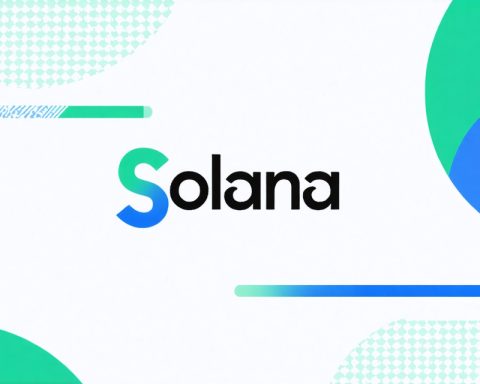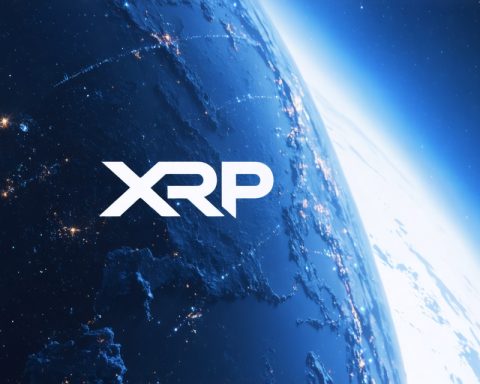- The Financial Services Commission (FSC) of South Korea is considering opening the country’s crypto market to international investors, signaling a potential transformative shift.
- Currently, foreign participation in South Korean crypto exchanges is limited due to strict know-your-customer (KYC) regulations requiring local bank account links, leading to the “Kimchi Premium.”
- If successful, the policy change could inject global capital into South Korea’s crypto market, potentially boosting the development of USD-based stablecoins.
- South Korean exchanges must demonstrate strong anti-money laundering (AML) compliance to participate in this new market era.
- A global competitive landscape in crypto innovation, alongside recent domestic regulations, pushes South Korea to reevaluate its position.
- The move presents a potential turning point for dominant exchanges like Upbit, facing possible extended AML measures.
The towering skyline of Seoul, with its glittering, ultra-modern buildings, is a testament to South Korea’s rapid technological advancement. Yet, beneath this shimmering facade lies a closely guarded crypto kingdom, inaccessible to foreign hands—until now. The Financial Services Commission (FSC), South Korea’s top financial regulator, is hinting at a seismic shift that could disrupt this status quo.
Amid the polished halls of the National Assembly, Kim Sung-jin, the dynamic head of the FSC’s virtual asset division, set the room abuzz. His vision? To open South Korea’s robust crypto market to international investors, marking a potential historic turning point for the nation’s digital asset landscape.
Currently, the doors to Korean crypto exchanges are bolted tightly to non-residents, largely due to rigorous know-your-customer (KYC) rules. These regulations obligate users to tether their exchange accounts to local bank accounts—a move that effectively sidelines foreign participants. It’s a fortress designed to maintain capital control, with the unintended byproduct of the notorious “Kimchi Premium,” where crypto prices soar above global benchmarks due to constrained liquidity.
The reverberations of a policy shift could be monumental. Imagine, if you will, a vibrant crypto market energized by fresh infusions of global capital—a scenario that Peter Chung, research lead at Presto Research, believes could become reality. Such a transformation could not only breathe new life into South Korea’s crypto ecosystem but could also cultivate a fertile ground for USD-based stablecoins, enhancing the financial fabric of the region.
Yet, ambition must tango with readiness. South Korean exchanges are under the magnifying glass, tasked with proving their anti-money laundering (AML) prowess. Kim’s cautious optimism underscores a conditional openness, dependent on exchanges demonstrating compliance with robust safeguards.
The backdrop to this potential revolution is a global stage fiercely competitive in crypto innovation. The U.S., under previous administration leadership, has been a dominant force, with South Korea now contemplating a strategic pivot to claw back its slice of the digital future. The nation’s recent implementation of the Travel Rule is indicative of these efforts, aligning closely with the Financial Action Task Force (FATF) recommendations to elevate AML standards.
As this thrilling narrative unfolds, Upbit and other influential players in the Korean crypto exchange landscape find themselves at a crossroads. The prospect of extending these stringent AML measures to even smaller transactions looms large, pressing them to adapt or risk obsolescence.
In this dynamic tableau of change and opportunity, the takeaway is clear. The race to redefine South Korea’s crypto frontiers is heating up, inviting a thrilling possibility—one where the world clamors to partake in a once insular market. It is a tale of openness with a caveat, a story of transformation on the cautious path to global integration. Will Korea’s crypto bastion conquer the challenges to unlock its gates? The world watches, anticipates, and waits.
Unlocking South Korea’s Crypto Fortress: What This Means for Global Investors
South Korea’s Emerging Crypto Landscape: Facts and Insights
South Korea has long been a prominent player in the global tech scene, and its cryptocurrency market is no different. With over 10% of the world’s cryptocurrency transactions originating from South Korea, the country serves as a significant hub. However, its crypto market has been notoriously closed off to foreign investors due to stringent know-your-customer (KYC) regulations. These rules delegate that users must link their exchange accounts to local bank accounts, effectively excluding non-residents. This has resulted in the “Kimchi Premium,” a phenomenon where cryptocurrency prices in South Korea exceed global benchmarks due to limited liquidity.
Market Forecasts & Trends
Global Investor Attraction: If regulatory changes proceed, foreign investors could flood into the South Korean crypto market. This influx could elevate trading volumes, create more competitive pricing, and introduce USD-based stablecoins, as predicted by Peter Chung of Presto Research.
USD Stablecoins as Game-Changers: The introduction of more stablecoins could offer investors a safer, more predictable entry into the market, enhancing liquidity and stability.
Technology Innovation: South Korea might leverage this opportunity to position itself as a leader in crypto technologies and blockchain innovations, attracting technology startups and venture capital investments.
The Impact of Regulatory Shifts
Opening the market could allow South Korea to capitalize on its technological advancements by creating a more globally integrated financial infrastructure in the crypto domain. However, this ambition is contingent on robust anti-money laundering (AML) measures that are currently in focus.
AML Compliance Challenges: As highlighted by Kim Sung-jin, exchanges must step up their compliance standards. Failure to meet global AML requirements could stymie the market’s growth and limit foreign participation.
Travel Rule Implementation: South Korea has implemented the Travel Rule, aligning its regulations with Financial Action Task Force (FATF) recommendations, further fortifying its AML capabilities.
Pros & Cons of the New Regulatory Landscape
Pros
– Increased Liquidity: Opening up to foreign investors can increase trading volumes and market liquidity.
– Competitive Pricing: Reducing the “Kimchi Premium” by increasing market competitiveness.
– Economic Growth: More foreign investments could lead to economic growth and job creation within the tech and financial sectors.
Cons
– Regulatory Hurdles: Compliance with international AML standards can be demanding and costly.
– Market Volatility: Increased participation could lead to market volatility as new players enter and exit.
– Technological Dependence: Accelerating blockchain and fintech development requires ongoing investment and innovation.
Recommended Steps for Investors
1. Stay Informed: Follow updates from reputable sources like the Financial Services Commission (FSC) for the latest regulatory changes.
2. Evaluate Exchanges: Consider using exchanges that demonstrate high compliance with global AML standards.
3. Diversify Holdings: Consider diversifying cryptocurrency portfolios to manage potential volatility.
4. Use USD Stablecoins: Leverage USD-based stablecoins as a stable entry point into the Korean market.
5. Monitor Market Trends: Keep an eye on technological advancements and trends within the South Korean crypto and blockchain sectors.
Conclusion and Final Thoughts
The potential opening of South Korea’s crypto market to foreign investors is a pivotal moment for the global financial landscape. While challenges remain, the opportunity presents a thrilling prospect for both the country and global investors. The cautious, strategic entry will be key to mitigating risks and maximizing benefits in this nascent market.
For more information on the South Korean tech landscape, please visit the [Korea Economic Institute](https://keia.org/) for in-depth analysis and updates.


















